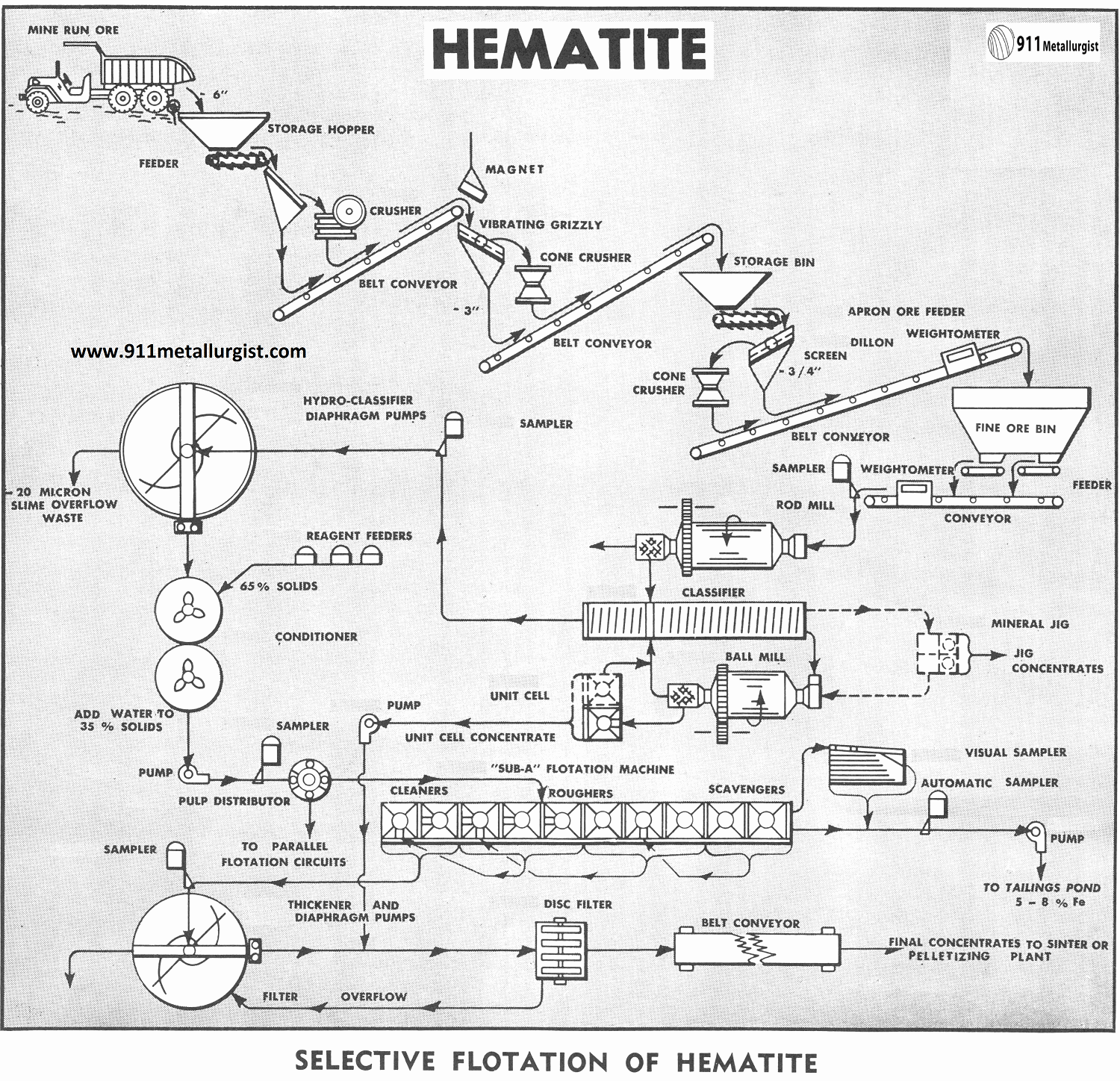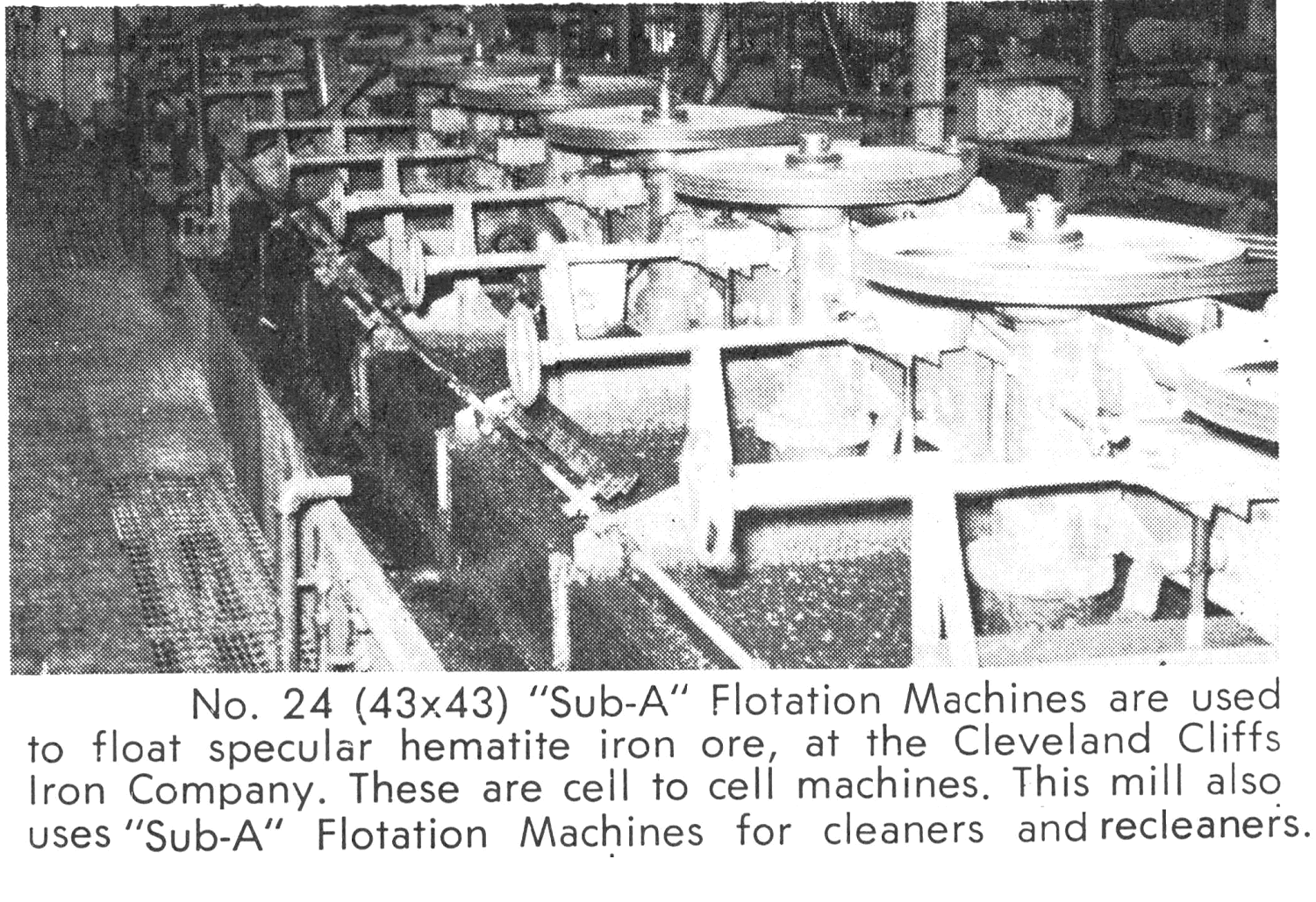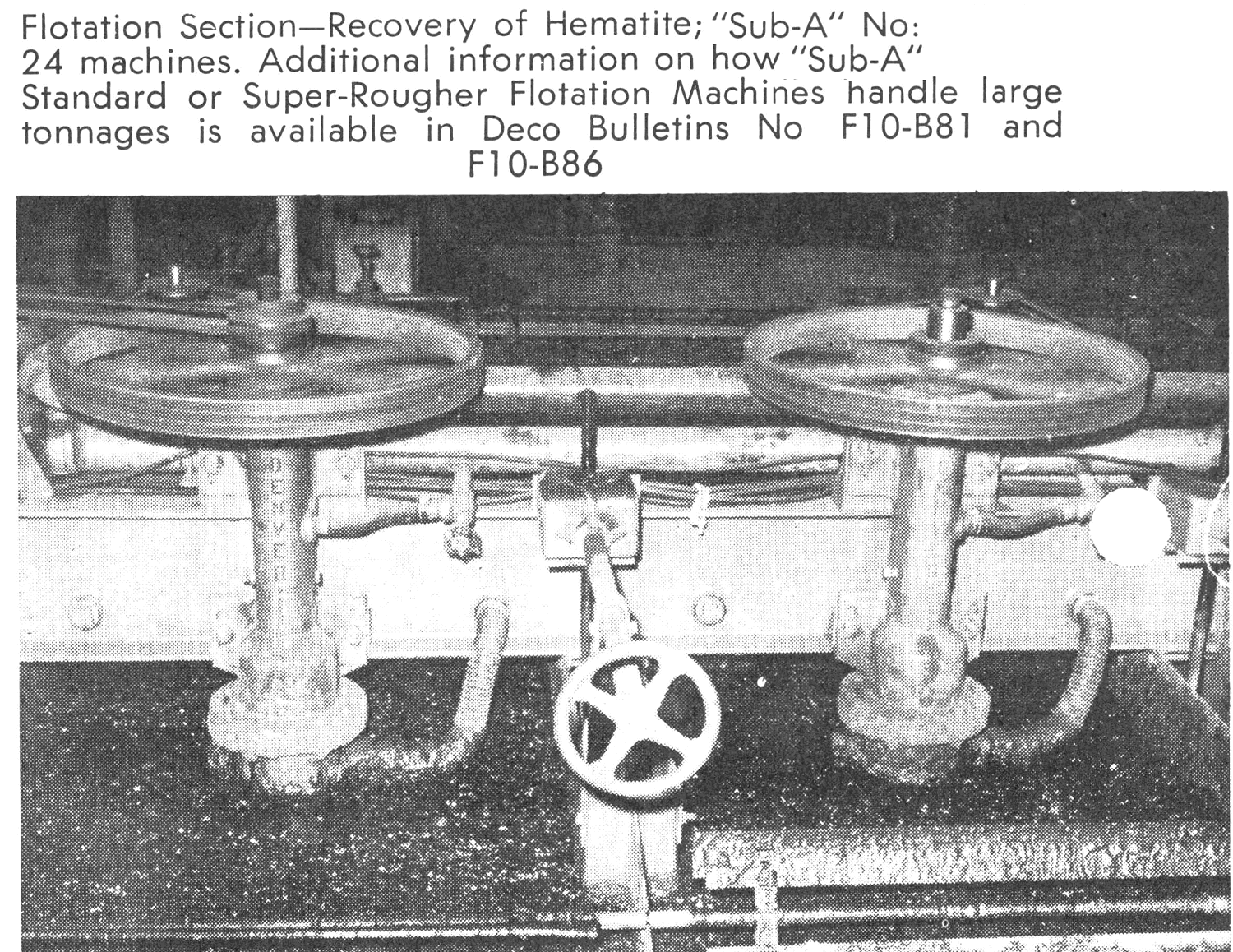Table of Contents
Direct shipping of high grade iron ore, because of depletion or partial depletion of reserves, or high costs of operation has forced operators to use some means of beneficiation to produce an acceptable product with the lower grade iron ore reserves.
Deposits of comparatively lower grade iron ore that remain relatively untouched or by-passed, are now most important because of increase in consumer demands. Deposits of comparatively low grade specular hematite amenable to beneficiation by flotation have produced concentrates superior in grade to direct shipping ores.
Low grade deposits containing specular hematite (Fe2 O3) as the major iron mineral as low as 25% Fe can be treated with “Sub-A” Flotation to produce concentrates that average better than 62% Fe with less than 9% SiO2 and with a high recovery.

The Flowsheet for Hematite Benefication Process by Flotation
The above flowsheet has been developed to produce a high grade product economically with maximum recovery. Due to the flexibility of Units and especially the “Sub-A” Flotation Machine, gravity flow can be utilized throughout the mill, thus keeping pumping requirements to a minimum.
Following initial test work for Ford Motors, a Pilot Plant was installed. A fatty acid reagent combination was developed to float the specular hematite in a concentrate assaying over 65% iron. This same procedure and reagents are now being employed in present day operations.

Crushing Hematite Rock
Three stage ore reduction is used with either a grizzly or vibrating screen between each crushing stage. Removing fines before putting the ore through a crusher increased the efficiency of the crusher as it is then only working on material that must be reduced. The fines form a bedding on the conveyor belt, thus increasing its life. Electromagnetic and magnetic head pulleys remove tramp iron from the ore, the former to remove iron near the surface and the magnetic pulley for tramp iron close to the belt.
Grinding Hematite Ore
Increased efficiency of grinding is obtained by using two stage grinding. The Rod Mill reduces the —¾” feed to approximately —10 mesh and is in open circuit with the Classifier which overflows at 48 mesh. A Ball Mill operates in closed circuit with the classifier.
A “Sub-A” Unit Cell will produce an extremely high grade concentrate when operated on the ball mill discharge. A Selective Mineral Jig may also be used on the classifier sands to produce a high grade concentrate. Concentrates removed in the grinding circuit are usually very low in phosphorus and silica.
Desliming and Conditioning of Hematite
Reagent costs are cut to a minimum, desliming the —48 mesh material at approximately 20 microns. This is accomplished with a heavy duty Hydroclassifier which also thickens the slurry to approximately 65 % solids for conditioning.
The thickened underflow from the hydroclassifier is metered with a Adjustable Stroke Diaphragm Pump to High Solids Open Type Conditioners. As true of many non-metallics, high solids conditioning is most important. After conditioning, the slurry is diluted to 35% solids for rougher flotation.
Reagents for Hematite Flotation
Reagents are stage added to the conditioners and unless a unit cell is used or a low phosphorus product is to be made, this is the only point of addition. The most common reagents are red oil high in oleic acid content, petroleum sulfonates, a frother and occasionally some mineral oil. Emulsions of the first two are sometimes helpful. Flotation is carried out in a neutral circuit unless the phosphorus, usually in the form of apatite, is to be depressed. Then cleaners are usually operated with acid pH and sodium fluoride, fuel oil and sulphuric acid are added to the cleaners.
Hematite Flotation Circuit
Each flotation circuit consists of a four cell open flow roughing section followed by a two cell scavenger. The scavenger concentrate is returned by gravity to the third rougher cell and the rougher concentrate from the first rougher cell is sufficiently high grade ( + 58% Fe) to combine with the cleaner concentrate which flows by gravity to the recleaners. All cells are supercharged with low pressure air. Double overflow Spitzkasten cells with froth paddles are used to quickly remove the heavy froth as soon as it forms. Typical flotation results are shown in the table below:

Thickening and Filtering Hematite Concentrate
The final concentrate flows by gravity to the Heavy Duty Spiral Rake Thickener and is metered to the Disc Filter with a Adjustable Stroke Diaphragm Pump. Due to fast settling characteristics, an agitating mechanism must be placed in the bottom of the filter tank to keep the solids from settling out. The filter is so installed that the tank may be drained by gravity to the thickener. The filtrate is returned to the thickener feed.
Sampling
Automatic Samplers are used to obtain control samples. The Visual Sampler is especially well adapted for the operator’s visual inspection of the flotation circuits tailings.
The flowsheet is designed for large tonnage operation and parallel circuits which are a necessity on all the low grade, low value iron ore deposits of this type. Flotation offers a very efficient low cost treatment method for beneficiation of these ores.

Source: This article is a reproduction of an excerpt of “In the Public Domain” documents held in 911Metallurgy Corp’s private library.
